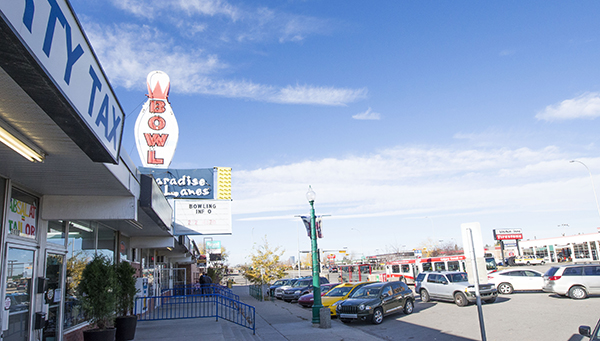
Oct. 22, 2014 | CREBNow
A city founded
A handful of early communities in the area helped Calgary grow to the city it is todayMore than 130 years ago, Calgary consisted of a fort surrounded by prairie grasses, First Nations tribes and settlers making a fresh start in the new west.
Today, the city is home to more than one million people and represents the industry engine of Canada's thriving economy.
Still, many of the communities founded yesterday remain today. Here's a snapshot of just a few: Inglewood, founded 1875
When the North West Mounted Police constructed Fort Calgary at the confluence of the Bow and Elbow rivers, a small town site quickly formed nearby. Inglewood didn't adopt its modern-day name Inglewood until 1911, having the previous moniker of East Calgary and Brewery Flats.
Historic Atlantic Avenue (Ninth Avenue to today's travelers) still boasts heritage buildings such as the Canadian Bank of Commerce building and Haskins Building.
Today, the eclectic community is home to 3,647 residents, and is making room for more with condo developments SoBow and i.D. Inglewood is also a popular activity hub, sharing its borders with the Calgary Zoo, Inglewood Bird Sanctuary and the burgeoning East Village.
Bowness, founded 1896
The vision that was the village, then town, of Bowness was thanks to John Hextall, an English-born rancher who moved to the area in 1908 and purchased a tract of land called the Bowness Ranche. Nearby, fast-growing Calgary had just become a centre for the Canadian Pacific Railway.
Hextall had the foresight to turn his land into a suburb for the young, bustling city. While the breakout of the First World War stalled his dreams of a wealthy suburb, the area did blossom into a town and was amalgamated in 1963.
A bridge constructed by Hextall to join Calgary and Bowness – today used for pedestrian and cycle traffic – still stands and bears his name. Another enduring gift is Bowness Park, donated by Hextall to Calgary in 1911. While the park was severely damaged by flooding in June 2013, it is expected to re-open to the public, with a number of improvements, later this year.

Mission, founded 1900
Founded in 1900 by Father Albert Lacombe as the village of Rouleauville, Calgary's Mission district was originally a tract of land obtained by the priest to ensure the area remained French and Catholic.
The village was centred around the Church on Rue Notre Dame (today known as 17th Avenue) and was annexed by Calgary in 1907.
Today, Mission is one of Calgary's most sought-after communities. The 2014 Calgary Civic Census reported 4,350 residents in the community, growing thanks to several new condominium developments such as the highly touted The River, Tela and Mission 34.
Forest Lawn, founded 1910
Named after the infamous Hollywood cemetery, Forest Lawn's initial growth was stalled by the outbreak of the First World War.
Joining with Alberta Park, the two communities became a town in 1935, and we annexed by Calgary in 1961. The 2014 Civic Census marked 3,367 residents in the community.

Montgomery, founded 1911
Initially called Shouldice after community founder James Shouldice, Montgomery was so named in 1943 for Bernard Law Montgomery, a military leader from Great Britain.
Like its Bowness neighbour to the west, Montgomery was amalgamated by Calgary in 1963.
Today, the community is being hailed as the "next urban village," with a revitalized housing market, a new Business Revitalization Zone, vibrant Main Street and nearby Shouldice Park recreation facilities.
Tagged: Bowness | Calgary Community | Calgary Real Estate News | Feature | Feature | Forest Lawn | Inglewood | Mission | Montgomery




